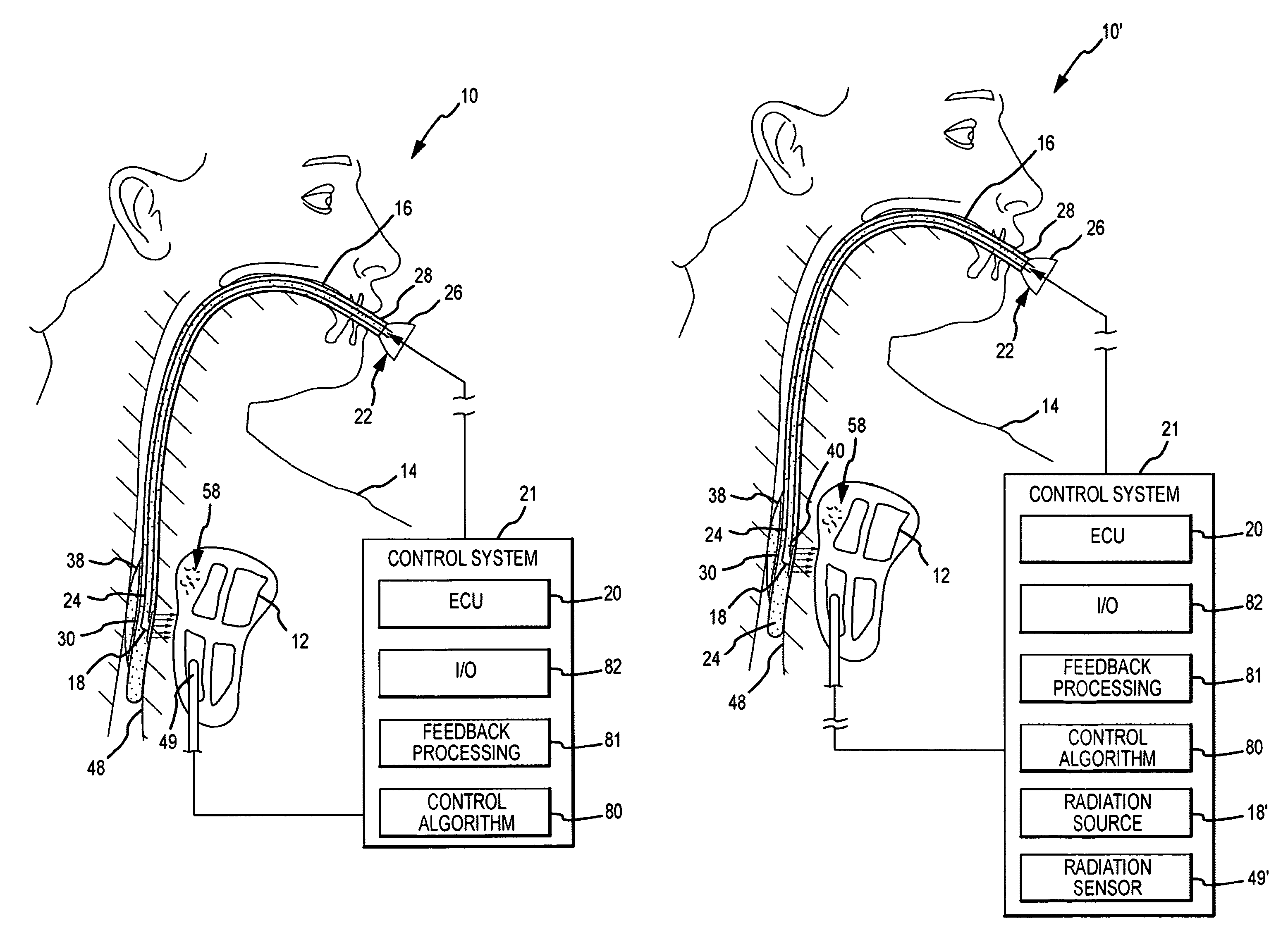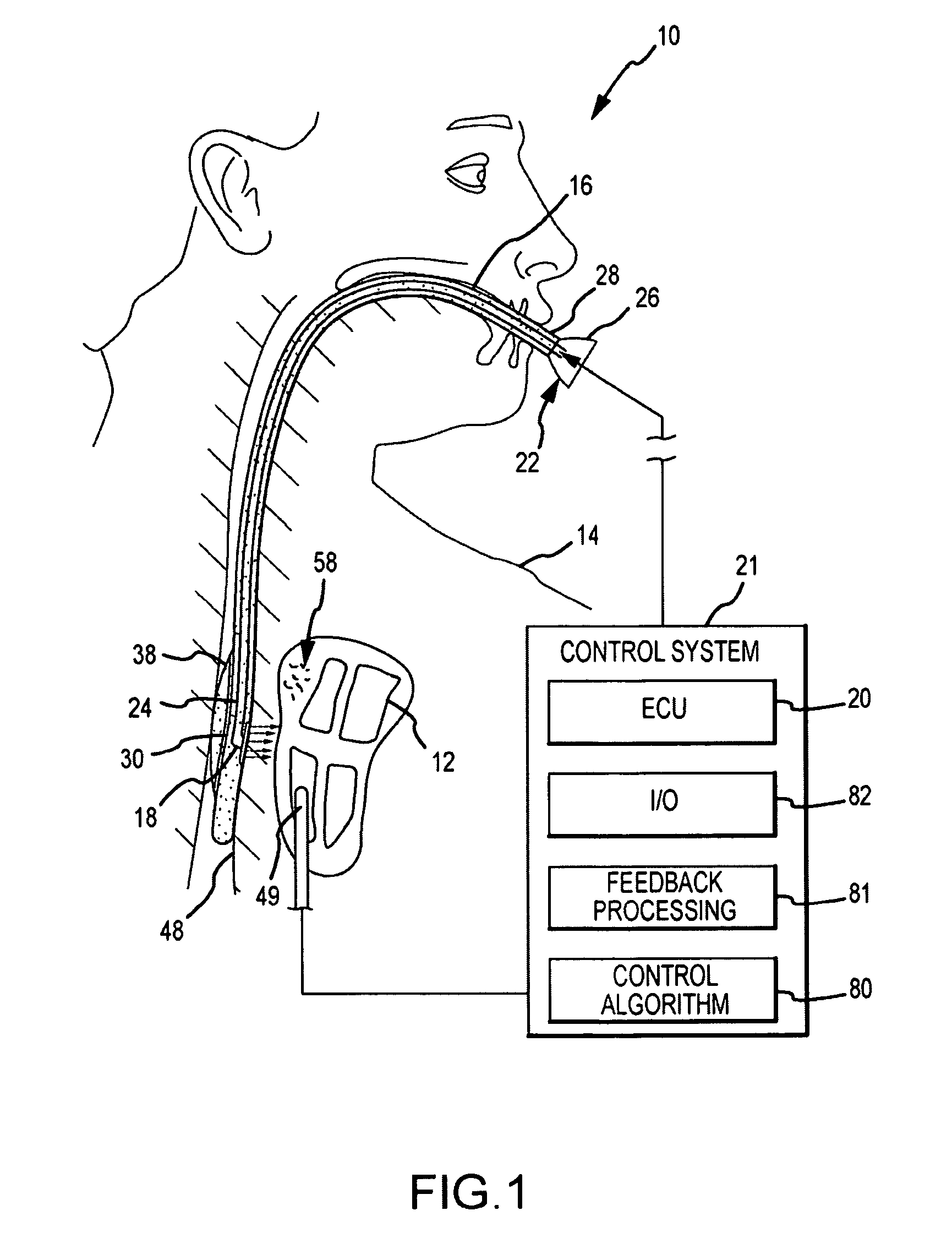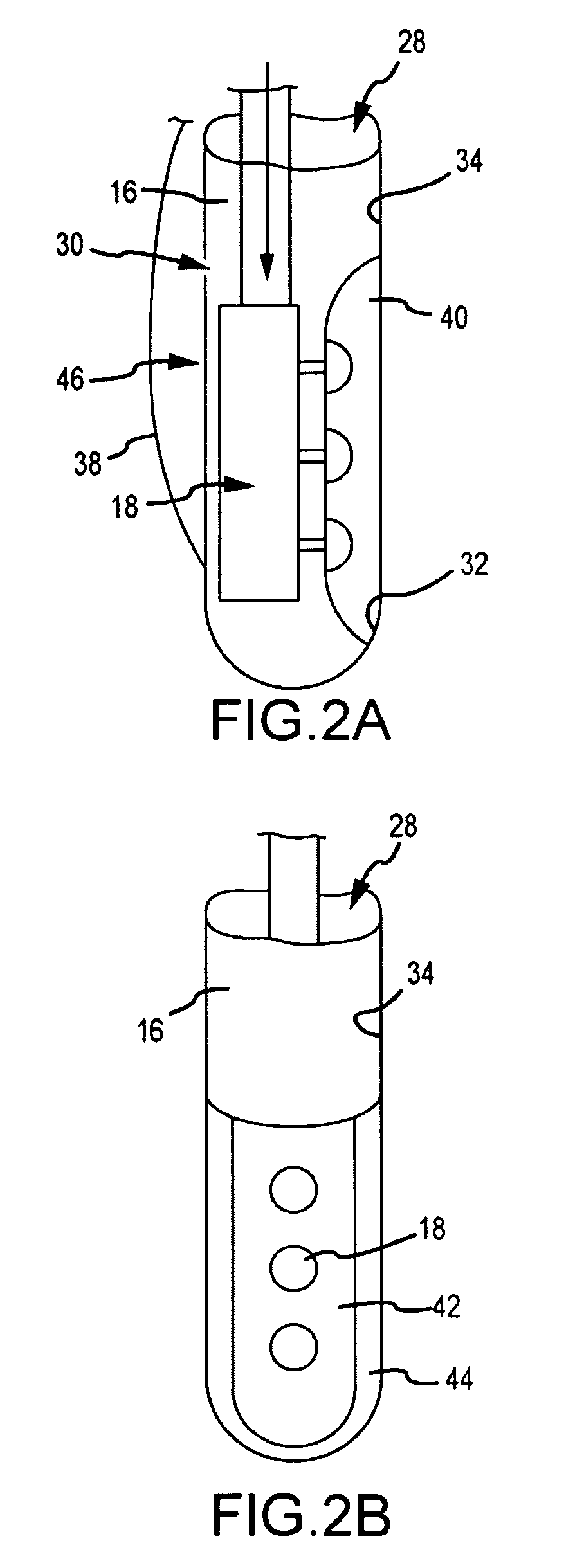Systems and methods of photodynamic-based cardiac ablation via the esophagus
a technology of photodynamic therapy and cardiac tissue, applied in radiation therapy, medical science, therapy, etc., can solve problems such as death, variety of ailments, etc., and achieve the effect of reducing surgical incisions or extensive maneuvering
- Summary
- Abstract
- Description
- Claims
- Application Information
AI Technical Summary
Benefits of technology
Problems solved by technology
Method used
Image
Examples
Embodiment Construction
[0019]Referring now to the drawings wherein like reference numerals are used to identify identical components in the various views, FIGS. 1-4 illustrate exemplary embodiments of a system 10 for photodynamic ablation of cardiac tissue 12 in a patient's body 14 via the esophagus 36. The system 10 provides real-time feedback which may be implemented by a clinician and / or control algorithms during the ablation procedure. It is noted that other components typical of systems which are conventionally implemented for various medical procedures are not shown or described herein for purposes of brevity. Such components may nevertheless also be provided as part of, or for use with, the system 10. For example, the system 10 may be used in conjunction with an ECG recording system, and / or various control devices (e.g., a catheter handle) for performing the procedure. Such components are well understood in the medical devices arts and therefore further explanation is not necessary for a complete u...
PUM
 Login to View More
Login to View More Abstract
Description
Claims
Application Information
 Login to View More
Login to View More - R&D
- Intellectual Property
- Life Sciences
- Materials
- Tech Scout
- Unparalleled Data Quality
- Higher Quality Content
- 60% Fewer Hallucinations
Browse by: Latest US Patents, China's latest patents, Technical Efficacy Thesaurus, Application Domain, Technology Topic, Popular Technical Reports.
© 2025 PatSnap. All rights reserved.Legal|Privacy policy|Modern Slavery Act Transparency Statement|Sitemap|About US| Contact US: help@patsnap.com



